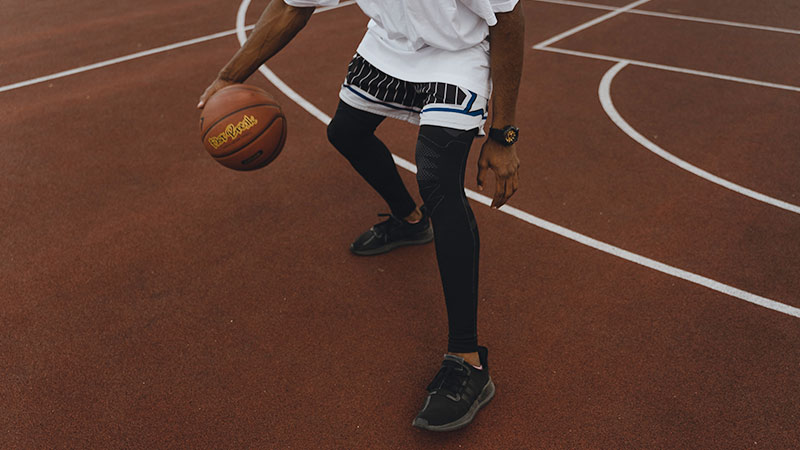“How to Grip a Basketball?” This question holds immense significance for basketball players of all levels. The proper grip on a basketball is a fundamental skill that directly affects shooting accuracy, dribbling control, and overall ball handling.
A solid grip allows players to maintain command over the ball, enabling them to execute precise passes, explosive dribbles, and accurate shots.
Understanding the fundamental principles of gripping a basketball is essential for every player aiming to improve their performance on the court.
This article will explore the various aspects of engaging a basketball, from hand placement and finger positioning to grip pressure and conditioning.
We will delve into the impact of a good grip on shooting, dribbling, and overall ball control, offering valuable insights and practical tips to help players develop a solid and reliable grip.
Let’s embark on this journey to enhance your basketball skills by mastering the art of gripping a basketball.
How To Grip A Basketball?
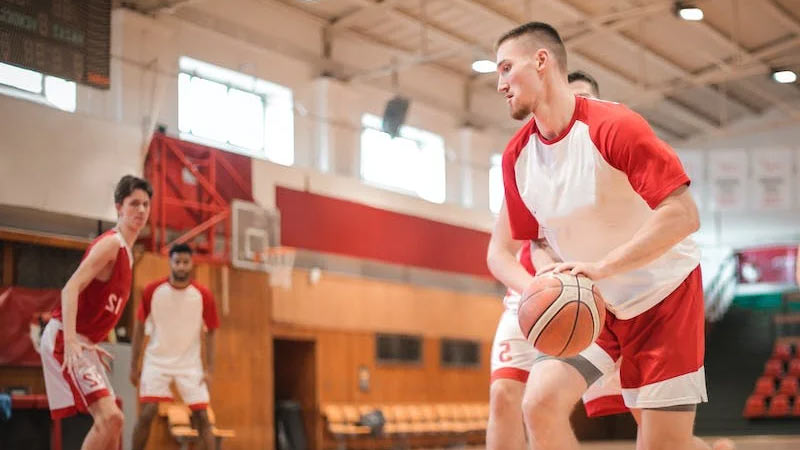
Having a proper grip on a basketball is essential for maintaining control and accuracy while dribbling, passing, and shooting. It allows you to handle the ball and execute various skills effectively and confidently. Here are some key points to consider when gripping a basketball.
Hand Placement
Start by placing your shooting hand on the ball, fingers spread wide, with the pads of your fingertips contacting the surface. Your palm should not touch the ball directly; instead, it should form a “C” shape with the ball resting on your fingertips.
Finger Alignment
Align your fingers with the seams of the basketball, as this provides better control and stability. Positioning your fingers on the seams gives you a better feel for the ball and maintains a consistent release when shooting.
Pressure
Apply gentle pressure with your fingertips to grip the ball firmly without squeezing too tightly. A balanced grip allows flexibility and quick adjustments while minimizing the risk of losing control.
Non-Shooting Hand
Place your non-shooting hand on the side of the ball to stabilize and guide it during dribbling, passing, or shooting. The non-shooting hand should not exert excessive pressure but provide support and control.
Practice
Regularly practice your grip by performing various basketball skills. Dribble with both hands, practice passing techniques, and shoot from different positions on the court. Repetition will help you develop muscle memory and improve your overall grip and ball control.
Hand Placement And Finger Positioning
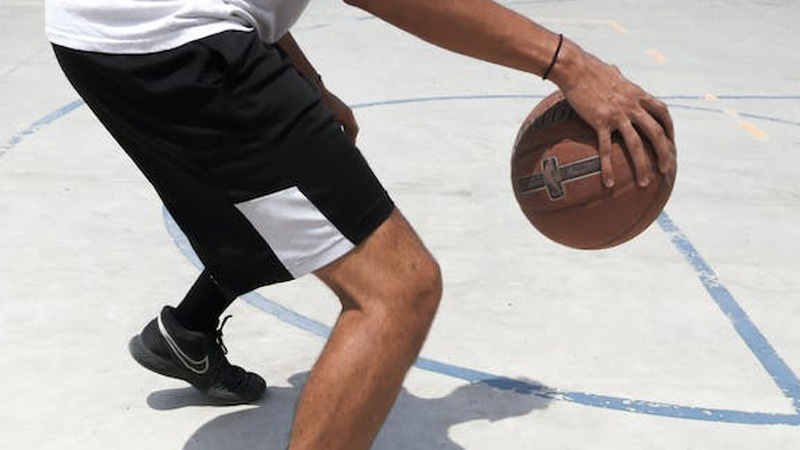
Proper hand placement and finger positioning are crucial aspects of basketball technique. They significantly impact a player’s control, shooting accuracy, and ball-handling skills.
This section will delve into the correct hand placement, the importance of spreading fingers evenly, and the positioning of fingertips on the basketball’s surface.
Correct Hand Placement On The Basketball
To achieve optimal control and stability, players should position their hands on the basketball with their palms facing upwards. The hand should be centered on the ball, with the fingers extended comfortably around its circumference.
This placement allows for better grip, control, and maneuverability during dribbling, passing, and shooting.
Importance Of Spreading The Fingers Evenly:
Spreading the fingers evenly across the basketball’s surface is essential for a balanced grip. When fingers are evenly spaced, it distributes the pressure more uniformly, providing better control and reducing the chances of the ball slipping out of the player’s hand.
This grip stability enhances passing accuracy, shooting control, and ball-handling skills.
Positioning Of Fingertips On The Basketball’s Surface:
The fingertips should be positioned on the seams or panels of the basketball to maximize control and spin. Placing the fingertips on the seams gives players better tactile feedback and can feel the ball’s rotation.
This positioning also facilitates shooting techniques such as backspin, which can improve shooting accuracy by promoting a smoother release and a consistent arc.
Hand Strength And Conditioning
Hand strength is crucial for maintaining a solid grip, especially in sports like basketball. Strong hands enhance a player’s ability to control the ball, execute precise movements, and withstand physical challenges on the court.
Hand conditioning exercises can significantly improve a player’s performance and reduce the risk of injuries.
Importance Of Hand Strength For A Solid Grip
A solid grip is essential for basketball players to handle the ball effectively, shoot accurately, and maintain control during dribbling and passing.
Strong hand muscles provide stability and allow players to generate power while handling the ball. A firm grip enhances defensive skills, enabling players to steal the ball more effectively and disrupt opponents’ dribbling.
Exercises And Techniques For Improving Hand Strength:
- Grip Strengtheners: Grip strengtheners or hand grippers can target the muscles in the hands, fingers, and forearm, improving overall hand strength.
- Finger Resistance Exercises: Squeezing a stress ball or using rubber bands around the fingers can help strengthen individual finger muscles, enhancing dexterity and grip strength.
- Wrist Curls: Performing wrist curls with dumbbells or resistance bands helps develop the muscles in the forearms and wrists, promoting better grip strength.
Benefits Of Hand Conditioning For Basketball Players:
- Enhanced Ball Control: Stronger hands and fingers allow players to manipulate the ball with precision, improving their dribbling, shooting, and passing accuracy.
- Increased Stealing Ability: Improved hand strength and coordination contribute to better hand-eye coordination and quicker reflexes, facilitating steals and interceptions on defense.
- Injury Prevention: Hand conditioning exercises can fortify the muscles, tendons, and ligaments in the hands and wrists, reducing the risk of sprains, strains, and other hand-related injuries.
Grip Pressure And Control
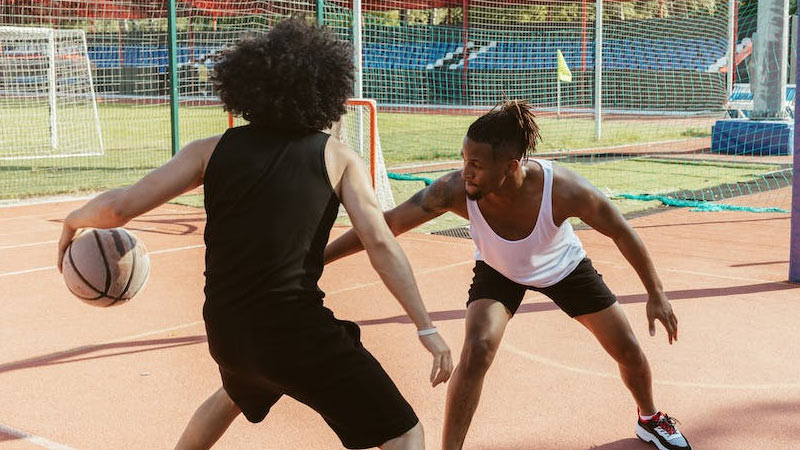
Effective control of the ball is crucial in various sports activities, such as shooting, dribbling, and passing. Proper grip pressure plays a vital role in achieving optimal performance and maintaining control over the ball.
This section will delve into the ideal grip pressure for different aspects of the game, the drawbacks of excessive grip pressure, and techniques to maintain a consistent grip.
Ideal Grip Pressure For Shooting, Dribbling, And Passing
- Shooting: When shooting a ball, applying a firm yet relaxed grip is essential. Squeezing the ball too tightly can disrupt the fluidity of the shooting motion, resulting in reduced accuracy and power. Aim for a grip that allows you to maintain control while enabling a smooth ball release.
- Dribbling: Dribbling requires a slightly looser grip compared to shooting. This allows for better ball control and maneuverability. Apply enough pressure to keep the ball secure while allowing your fingers to maintain a light touch, facilitating quick and precise dribbling movements.
- Passing: Similar to dribbling, passing requires a balanced grip pressure. Too much tension in your grip can lead to inaccurate passes and decreased ball control. Aim for a grip that comfortably distributes the force necessary for accurate and swift access.
Impact Of Excessive Grip Pressure On Performance
Excessive grip pressure can harm your performance and overall control of the ball. Some of the negative consequences include:
- Fatigue: Gripping the ball too tightly for extended periods can lead to hand and forearm fatigue, diminishing your ability to maintain control and execute precise movements.
- Restricted Range Of Motion: Excessive grip pressure restricts the flexibility and range of motion in your fingers and hand, limiting your ability to make subtle adjustments and changes in ball handling.
- Reduced Touch And Feel: Over-gripping the ball diminishes your tactile sensitivity, making it harder to feel the ball’s texture and react appropriately to its movements.
Techniques To Maintain A Consistent Grip Pressure
- Relaxation Exercises: Engage in relaxation exercises, such as deep breathing and visualization techniques, to promote a calm state of mind and reduce excessive tension in your grip.
- Conscious Awareness: Pay attention to your grip pressure during practice and games. Regularly check in with yourself to ensure you’re not over-gripping the ball and make adjustments as needed.
- Grip Strengthening Exercises: Strengthening the muscles in your fingers, hand, and forearm through specific exercises can enhance your grip strength and control, reducing the tendency to rely on excessive pressure.
- Mental Focus: Develop mental cues or mantras to remind yourself to maintain a relaxed and consistent grip pressure throughout the game.
Using The Pads Of The Fingers
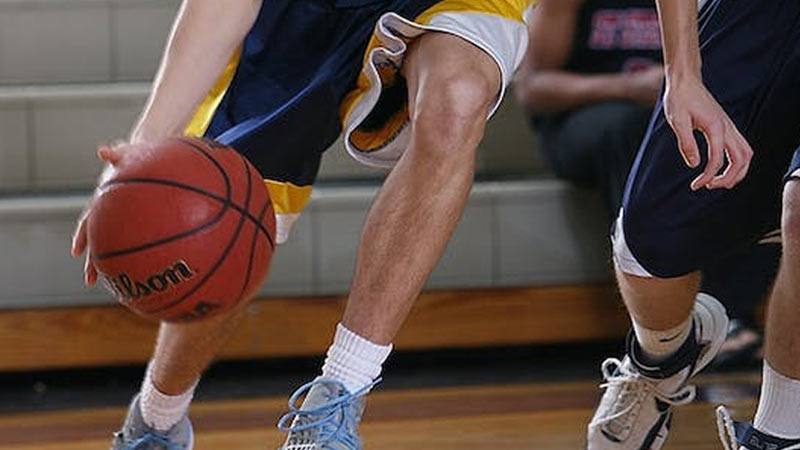
Using the pads of the fingers refers to the technique of using the soft, fleshy part of the fingertips when performing tasks that require precision or control, such as playing musical instruments, typing on a keyboard, or operating touchscreens.
Concept Of Using The Pads Instead Of The Fingertips
When using the pads of the fingers, the pressure is distributed more evenly across the surface area, allowing for greater accuracy and control. This technique minimizes the risk of accidental slips and provides a more stable and reliable touch interface.
Advantages Of Utilizing The Pads For Better Control
- Improved Precision: The pads offer a larger contact area, making it easier to accurately hit specific keys or targets. This is particularly beneficial when typing quickly or executing intricate movements.
- Reduced Fatigue: As the pads are padded with more flesh and have better cushioning, they help absorb impact and reduce strain on the fingertips. This leads to less fatigue and discomfort during prolonged use.
- Enhanced Tactile Feedback: The pads are more sensitive to touch and can provide better tactile feedback than fingertips. This allows for a heightened sense of control, enabling users to distinguish between different textures better and respond accordingly.
Tips For Developing The Habit Of Using The Pads Effectively
- Mindful Practice: Consciously focus on using the pads rather than the fingertips during activities that require precise finger control. Start with slower and deliberate movements, gradually increasing speed and complexity as muscle memory develops.
- Proper Hand Positioning: Ensure your hands are positioned correctly and comfortably for the task. Maintaining a relaxed and neutral hand posture can facilitate using the pads effectively.
- Regular Breaks And Stretching: Take frequent breaks to rest your hands and stretch your fingers. This helps alleviate tension or stiffness and promotes blood circulation, which is essential for maintaining dexterity.
Frequently Asked Questions
Is it necessary to have extensive hands to grip a basketball effectively?
No, hand size is not the sole determining factor. Proper technique and finger strength are essential for a solid grip.
How tight should I grip the basketball?
You should grip the ball firmly but avoid excessive tension. Find a balance that allows for control and flexibility.
Can I improve my grip strength?
Regular finger and hand exercises can significantly improve your grip strength over time.
Should my thumb touch the ball while gripping it?
The thumb should make contact with the ball, acting as a stabilizer for better control.
Can I use chalk or grip-enhancing substances?
While these may be used in certain situations, it’s essential to check the regulations of the league or competition you are participating in, as some may prohibit their use.
Conclusion
Developing a solid grip on the basketball is crucial for enhancing your overall performance on the court.
You can significantly improve your ball control, shooting accuracy, and passing efficiency by employing proper finger and hand placement techniques, managing pressure and tension, and incorporating grip-strengthening exercises.
Remember, practice and consistency are vital to mastering the art of gripping a basketball. So, get out on the court, implement these techniques, and watch your game reach new heights.

